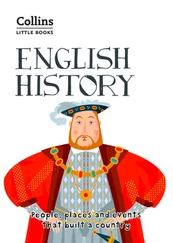Hereford George - Battles of English History
Здесь есть возможность читать онлайн «Hereford George - Battles of English History» — ознакомительный отрывок электронной книги совершенно бесплатно, а после прочтения отрывка купить полную версию. В некоторых случаях можно слушать аудио, скачать через торрент в формате fb2 и присутствует краткое содержание. Жанр: foreign_antique, foreign_prose, на английском языке. Описание произведения, (предисловие) а так же отзывы посетителей доступны на портале библиотеки ЛибКат.
- Название:Battles of English History
- Автор:
- Жанр:
- Год:неизвестен
- ISBN:нет данных
- Рейтинг книги:5 / 5. Голосов: 1
-
Избранное:Добавить в избранное
- Отзывы:
-
Ваша оценка:
- 100
- 1
- 2
- 3
- 4
- 5
Battles of English History: краткое содержание, описание и аннотация
Предлагаем к чтению аннотацию, описание, краткое содержание или предисловие (зависит от того, что написал сам автор книги «Battles of English History»). Если вы не нашли необходимую информацию о книге — напишите в комментариях, мы постараемся отыскать её.
Battles of English History — читать онлайн ознакомительный отрывок
Ниже представлен текст книги, разбитый по страницам. Система сохранения места последней прочитанной страницы, позволяет с удобством читать онлайн бесплатно книгу «Battles of English History», без необходимости каждый раз заново искать на чём Вы остановились. Поставьте закладку, и сможете в любой момент перейти на страницу, на которой закончили чтение.
Интервал:
Закладка:
There is also the Bayeux Tapestry, which has been reproduced by Mr. Collingwood Bruce, and which for costume and arms is invaluable: but from the nature of the case it is a very poor guide in determining the tactics of the battle. To rely on it for such purposes, as Professor Freeman and others do, seems to me as unreasonable as to deduce a military history of the battle of Agincourt from Shakespeare's Henry V. , as put on the stage.
4
A vehement controversy has raged since Professor Freeman's death regarding the accuracy of his narrative, the point most strenuously disputed being his statement that Harold's front was protected by a solid wooden barrier. It is maintained in opposition that there was nothing but the wall of interlaced shields familiar to both Saxons and Danes. Without entering into the controversy, I content myself with saying that while the weight of testimony seems to be in favour of some kind of obstacle having been erected, I am satisfied, for the reasons given in the text, that there cannot have been anything like the massive structure described by Professor Freeman.
5
It must have been later in reality; since sunrise, the whole Norman army had marched seven miles, had halted, and had then been arrayed in order of battle, and this on October 14. Moreover, such a battle could not have lasted nine hours, and it certainly ended at dark.
6
This suggestion is not based on any direct statement, but it seems to be the only way in which the archers could have aimed effectually. If they had been behind the horsemen, shooting over their heads, the arrows would have been as likely to strike Normans as Saxons.
7
Harold's tomb was shown at Waltham down to the date of the dissolution of the abbey. There is no positive information on the point, but there seems no reason for rejecting the explanation that William afterwards allowed the corpse of Harold to be removed to Waltham. It is at least much more probable than that a falsehood should have been allowed to pass unchallenged.
8
This word, which is of course French but was adopted in English with the same signification, definitely means a body of men, originally mailed horsemen, drawn up together; but it implies nothing as to their formation or strength. The usual practice was to form three; the vanguard, which became ordinarily the right when in line of battle; the rearguard, which similarly became the left; and the main battle or centre. In the Latin chroniclers the equivalent term is generally acies , which occasionally leads to some confusion in interpreting their statements, as the classical sense of acies is order of battle, as contrasted with agmen , order of march.
9
It is suggested that this was a waggon, such as was habitually used in Italy at an earlier date, and occasionally at least in England (as at the battle of the Standard), to carry to battle the standard of the town. The earl's standard certainly floated over it, and attracted prince Edward's attention: and from the account given of the prisoners being shut up in it, it would seem to have been very substantially built. Montfort however would hardly have travelled in such a waggon, and certainly the royalists imagined he was in it. There is no reason except the silence of the chroniclers why there should not have been both a carroccio , and also Montfort's own carriage.
10
As he had not been crowned at Rome he had no right to use the imperial title.
11
The name itself may very possibly be derived from the event.
12
There are the remains of an ancient bridge at this spot, where so many of the fugitives from the battle were cut to pieces that the meadow bears the name of Dead Man's Eyot: but there is no mention of a bridge in the authorities, so that probably the bridge was built later.
13
Here again I have given the account which seems to me most probable, after study of the ground and of the authorities. Professor Prothero, in his Life of Simon de Montfort (p. 339 note), gives the different possibilities, and comes to a conclusion differing from mine on one point only.
14
Philip IV. was playing the same game, over-asserting his claims as feudal suzerain over Guienne.
15
A map showing all this part of Scotland will be found at p. 147.
16
The first victory of the pike was gained by the Flemings at Courtrai, five years later.
17
All accounts agree in representing the English numbers as more than double the Scottish, with an enormous superiority in men-at-arms, the most important item.
18
The use of the crossbow was solemnly condemned by the Lateran Council of 1139: no reasons were given, but presumably it was thought that the cross-bow neutralised the natural, and therefore divinely intended, advantage of superior strength.
19
There is a statute of Henry VIII. which forbids practising at any less distance.
20
The so-called Salic law had never been heard of till Philip V. evolved it for his own purposes a few years before: but the principle of exclusive male succession is a natural one for a feudally organised nation to adopt.
21
Louis VII. of France had it is true married the heiress of Aquitaine and ruled the province for a few years, but only in her name: and she soon repudiated him, to marry Henry II. of England.
22
This is said by Froissart to have been done on the advice of Godfrey of Harcourt, who was certainly one of the king's most trusted officers during the campaign, habitually leading the advanced guard.
23
He was in the county of Ponthieu, which had been the portion of Margaret of France, second wife of Edward I. He was not descended from her, but from Eleanor of Castile: there does not however seem to have been any provision for Ponthieu being inherited by Margaret's children.
24
Herse has another and less familiar meaning, which still better corresponds to the formation indicated – the stands used in churches for seven candles, the centre one forming the apex, and those at the sides gradually lower.
25
This theory is so far as I know novel, and I put it forward as a suggestion for what it may be worth. It explains, I venture to think, the extraordinary success of the English tactics, and it contradicts no ascertained facts. Every one who knows a little about drill will see that in this formation the archers would be able to change the direction of their shooting with perfect ease, and without interfering with each other. The archers cannot have been on the flanks of the whole line only, or their arrows, long as the range was, would not have told across the whole front. They could obviously move with ease and rapidity, and it is quite possible that they may have formed a line in front of the dismounted men-at-arms, when no attack was impending, as for instance to encounter the Genoese, and have fallen back to the herse when the knights were seen preparing to charge.
26
There is no need to insist on the picturesque detail of the rain which fell just before the battle having wetted the strings of the cross-bows, while the English kept their bows under cover. It may well have been true: but the range of the long-bow was always greater than that of the cross-bow.
Читать дальшеИнтервал:
Закладка:
Похожие книги на «Battles of English History»
Представляем Вашему вниманию похожие книги на «Battles of English History» списком для выбора. Мы отобрали схожую по названию и смыслу литературу в надежде предоставить читателям больше вариантов отыскать новые, интересные, ещё непрочитанные произведения.
Обсуждение, отзывы о книге «Battles of English History» и просто собственные мнения читателей. Оставьте ваши комментарии, напишите, что Вы думаете о произведении, его смысле или главных героях. Укажите что конкретно понравилось, а что нет, и почему Вы так считаете.












